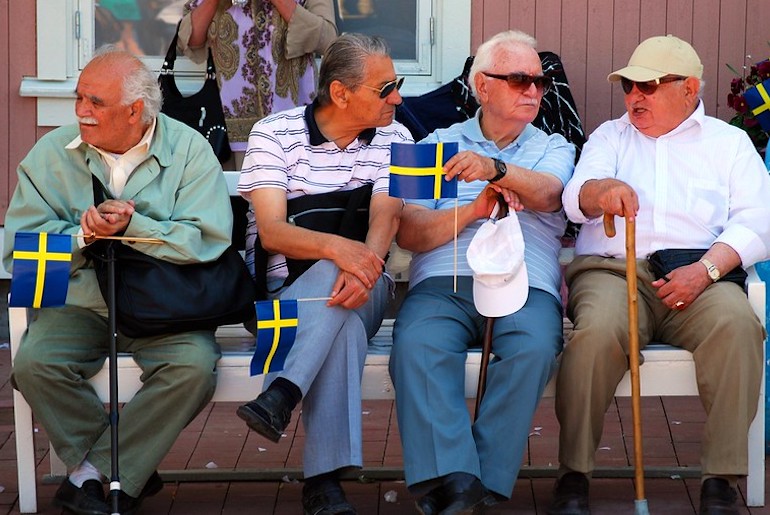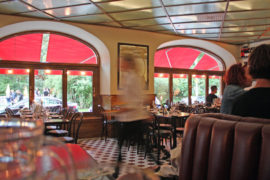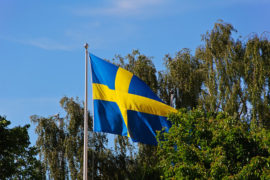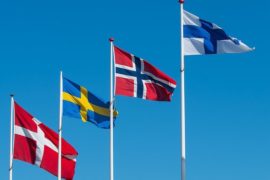Have you ever wondered about the history of Swedish surnames, or efternamn? And do you want to know about the origins of some common Swedish surnames?

Swedish last names are pretty interesting because of the way that they are formed – and you’ve probably wondered why so many seem to end with ‘son’.
Without further ado, let’s dive in and learn about the fascinating history of Swedish surnames, and check out some cool Swedish last names too.
Ten most common Swedish surnames
Here are the top 10 most common last names in Sweden.
- Andersson
- Johansson
- Karlsson
- Nilsson
- Eriksson
- Larsson
- Olsson
- Persson
- Svensson
- Gustafsson
You’ve probably noticed a pattern in the names in the list above: they all end in -son. Just under 2.7 million Swedes have surnames with this common ending, which is around a third of all Swedish surnames!
But what is the meaning of son? And why do so many Swedish last names end in -son?
The history of Swedish surnames: patronymics
The system that Swedish last names are based on is called the patronymic system. This means that a person’s last name is derived from their father’s first name.
This system was originally introduced by King Charles XII in 1726, in an attempt to eliminate family names and make it easier for people to find out who they are related to.
Let’s look at an example: if the father’s name was Lars Nilsson, the sons were then given the last name of Larsson (literally: the son of Lars), and the daughters were given Larsdotter (the daughter of Lars.)
However, this tradition was abandoned in the 19th century, which is why last names ending in –dotter are almost non-existent nowadays – in Sweden, at least.

Quite a few famous Swedes have -son names, such as Benny Andersson (of Abba fame), Zara Larsson (Swedish pop singer) and Carl Larsson (Swedish arts and crafts artist).
Natural-sounding Swedish names
There is another system used in Sweden for last names: natural names. In fact, more than a third of Swedes have nature-related names. These names can originate from plants, animals, or geographic features like mountains and bodies of water.
Here is a list of a few of the most common Swedish last names with a nature theme.
- Berg (mountain)
- Holm (islet)
- Ström (stream)
- Lund (grove)
- Björk (birch)
- Lundgren (grove branch)
- Berglund (mountain grove)
- Sandberg (sand mountain)
- Lindström (linden stream)
- Lindgren (linden branch)
- Bergström (mountain stream)
Natural names can have either one or two parts. The two-part names have nature words at the beginning and end.
For example, the name Bergström comes from the words berg (meaning “mountain”) and ström (meaning “stream”), so literally means “mountain stream”.
Another example is the name Lindgren which means “tree branch”, from the words lind (“linden tree”) and gren (“branch”).
Nature names are most common in the northern regions. In Norrland – up in the very north of Sweden – nearly 60 percent of all the residents have names alluding to nature.

Many famous Swedes have names derived from nature, including Bill Skarsgård (Swedish actor), Greta Thunberg (environmental activist), Astrid Lindgren (author of Pippi Longstocking) and Tim Bergling (otherwise known as Avicii).
Noble Swedish names
So far we’ve learned that most Swedes have names that derive from either patronymic or natural origins. But there are other Swedish surnames that don’t fall into one of these categories, such as noble names.
Noble names, or adelsnamn, date back to the 1300s. These names were given to the Swedish nobility and were often based on their family crest. Later, they adopted surnames to distinguish themselves from non-nobles.
Swedish last names from farming
Farm names, or gårdsnamn, are quite peculiar because the surname is placed in front of their given name. These names grew very common in the region of Dalarna and were passed down through the generations.
Farm names were often given based on the person’s profession, just like you see in many British surnames.
One of the most common farm names in Sweden was Smed, meaning blacksmith. So if someone’s name was Smed Anders (Smith Anders) you could assume he was working as a blacksmith.

Farm names were also given based on the name of your family’s farm. For example, if the farm’s name was Västgården, the family living there would put “Väst” in front of their given name to indicate that they lived on that farm.
Rare Swedish surnames
We’ve seen some of the most common Swedish last names, but what about some of the more uncommon Swedish surnames? These include:
- Åhlen
- Ahlstrand
- Sandelin
- Tillberg
- Rönnbäck
- Örn
- Eklind
- Kjellsson
- Alvarsson
These names come from a variety of different sources, and it’s quite uncommon to meet someone with one of these names. So if you do happen to meet one, hats off to you!
Swedish surnames in America
Swedes have been migrating to the US for hundreds of years, and there are over 3.5 million people in the US with Swedish heritage.

However, most of them have different surnames to their ancestors. This is because Swedish surnames were changed (either completely or partially) once they entered the US due to immigration and integration into American culture.
Here are a few of the most common Swedish-derived surnames in the US.
- Johnson
- Anderson
- Peterson
- Nelson
- Olson
- Carlson
- Larson
- Erickson
- Swanson
Perhaps you noticed how in all of these names, an ‘s’ was dropped out: Johansson turns into Johnson, while Nilsson turns into Nelson. Many Swedes anglicized their names in order to adapt ‘better’ to America.
In the case where the last name consisted of letters that were not familiar to English speakers – mostly Å, Ä, and Ö – they were usually dropped. Nygård turned into Nygard and Lindström became Lindstrom.
Swedish last names today
As society progresses, certain traditions become a thing of the past. In many cultures, it’s a tradition for married couples to take the husband’s last name, and for their children to take that last name as well.
As we have learned, Swedish society also used this concept through their patronymical naming system. However, this idea is slowly starting to fall away,
It’s becoming more and more common for a married couple to take the wife’s last name, or sometimes they come up with a totally new name. Some couples even choose to combine their names into one.
Of course, this is not an idea created by Swedes, but the concept is becoming increasingly popular across Sweden and other Nordic countries as people pursue a fairer, more modern way of thinking.
Some people may think that Swedish last names aren’t so interesting, but we disagree! It’s fascinating to learn how names evolve throughout time, and how different factors influence the history of one’s last name.
From patronymics to natural names, there’s no denying that Swedish last names have some interesting origins. And we hope that this article has given you an insight into how Swedish last names work, and how they can be an important part of a person’s identity.
See also:
Popular Swedish names for girls and boys
Finnish last names and their meanings
A simple guide to Icelandic last names









